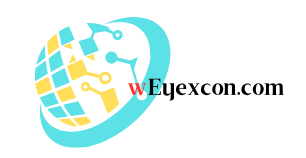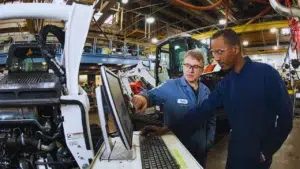The distinction between creativity and functionality is becoming increasingly hazy. In the rapidly changing digital world. The touch screen desktop computer is one of the most revolutionary. Innovations to contemporary businesses. Design studios and tech laboratories are no longer. The only places where these interactive systems can only be found.
Because of their unparalleled convenience, simple control, and elegant design. They are quickly becoming an essential part of smart workspaces. Touch screen desktops are at the forefront. Whether you’re wanting to increase productivity or create a collaborative atmosphere.
Why Smart Workspaces Choose Touch Screen Desktop Computers

| Feature | Benefits of Smart Workspaces |
| Touch Functionality | Enhances user interaction and ease |
| Space-Saving Designs | Ideal for compact or minimalist setups |
| Fast Navigation | Reduces time switching between tasks |
| Modern Aesthetic Appeal | Creates a sleek, professional environment |
| Easy Multitasking | Supports multiple active apps or windows |
Streamlined Designs for Clutter-Free Workstations
These devices’ sleek, integrated appearance is one of their main selling points. Separate towers are no longer necessary because. The majority of touch screen computers have built-in CPUs. This is particularly useful in creative settings. Where minimalism is important, such as in small workplaces or shared desks. In addition to freeing up space, a workspace. Fewer cords and accessories encourage concentrated work.
Improved Workflow and Productivity
When it comes to increasing everyday productivity, touch-screen desktop computers are revolutionary. For example, swiftly marking presentations. Zooming in on papers and dragging and dropping files becomes instinctive. The time spent browsing menus and shortcuts is reduced. When the material can be interacted with directly. The touch interface makes everything easier. Whether you’re responding to emails, managing several tabs, or editing images.
Key Use Cases in Modern Workplaces
| Industry/Application | How Touch-Screen Desktops Are Used |
| Education | Interactive learning, student engagement |
| Retail | Point-of-sale, product browsing stations |
| Design Studios | Precision editing, concept visualization |
| Healthcare | Patient data management, telehealth apps |
| Corporate Offices | Video calls, presentations, and file access |
Real-World Example: A Design Studio Upgrade

Consider an Austin, Texas-based creative studio that has just been replaced. It’s traditional PCs with touch-screen desktops. Their designers saw an instant increase in productivity. Artists now employ pinches, swipes, and touches to control digital assets rather than. Keyboard shortcuts or mouse clicks. Using huge multi-touch monitors during brainstorming sessions helps. The team works together more effectively and completes projects more quickly.
Touch Screens Support Collaborative Workflows
Teamwork is emphasized in smart workspaces, and touch screens excel in this regard. Screen sharing and real-time communication solutions have grown. These meetings are improved by a touch screen desktop. which enables team members to quickly annotate, highlight, or sketch papers. When paired with tools for video conferencing. They take center stage at a collaborative workstation.
Health and Ergonomics Considerations
Arm fatigue might result from touching. A vertical screen for extended periods of time. To combat this, a lot of contemporary models come with tiltable screens or movable stands. Some even provide seamless transitions between touch input. Conventional mouse/keyboard, enabling users to work comfortably all day.
Easy Maintenance and User-Friendly Interfaces

Which lowers learning curves. Because of their simpler maintenance and lower hardware complexity, IT teams adore them. The user interfaces of Windows, macOS, and even some Linux systems are now more intuitive. Then ever, thanks to optimizations made especially for touch inputs.
Security and Access Control Advantages
Data security is essential to smart offices. Nowadays, a lot of touch screen desktops are equipped with biometric access. Capabilities like facial recognition or fingerprint scanners. These provide privacy without requiring complicated passwords to be remembered. Businesses that handle sensitive data or need to grant staff tiers of access will find it to be a good fit.
Customizable Software for Task-Specific Needs
Customization is another asset. Companies can install dashboards or apps that are specifically designed for their workflow. For instance, analysts can utilize data dashboards that are geared for touch navigation. Whereas departments that interact with customers might use presentation software. Because of its versatility, the desktop is guaranteed to suit the task. Then the other way around.
Comparing Touch Screen vs. Traditional Desktops
Touch-enabled systems are superior in terms of flexibility and user engagement. Even though traditional desktops are still very powerful. They facilitate more user-friendly workflows. They are better able to adjust to changing work settings. Then, a simple update for businesses trying to future-proof their operations.
Choosing the Right Model for Your Workspace
Desktops with touch screens are not all made equal. Think about things like screen size, resolution, operating system, and input responsiveness. Business users might place a larger priority on performance and durability.
Sustainability and Eco-Friendly Designs
Today’s workplaces are also environmentally conscious. Fortunately, a lot of touch screen desktops now have EPEAT certifications. Energy-efficient parts and recyclable materials. They are advantageous for environmentally conscious workplaces because. They use less electricity while maintaining excellent performance.
Integrating with Other Smart Devices
The key to smart workspaces is connectivity. Touch screen desktops are easily able to connect to cloud services, virtual assistants. Smart lighting and Internet of Things devices. This smooth connection gives users a harmonious ecosystem. While streamlining processes and increasing productivity even further.
Encouragement for Small Businesses and Startups
Building a smart office doesn’t require a Fortune 500 budget. There are currently a lot of reasonably priced touch screen desktop solutions available. Particularly for small and beginning enterprises. These systems provide all the essential features, like speed. Design, and multitasking, without breaking the bank. It’s a wise investment that boosts client happiness and team productivity.
Wrapping Up
A desktop computer with a touch screen is more than just another device. On your desk, it’s a tool that can revolutionize the way we operate. These solutions outperform conventional configurations in smart workspaces. Where speed, flexibility, and teamwork are critical factors. The combination of performance and engagement they provide makes them a great option. Whether you’re managing a team, operating a business. Simply seeking to streamline your everyday duties. Take your productivity to the next level by upgrading your workspace right now.
FAQs
Why is a desktop computer with a touch screen preferable for offices?
Desktop computers with touch screens provide a more user-friendly interface and speedier interaction. Workers can quickly and naturally complete tasks by tapping, swiping, or zooming in. These machines make workspaces cleaner and eliminate the need for several devices. They work well for both solo and group projects.
Are desktop computers with touch screens appropriate for every industry?
Touch screen desktops are indeed widely used in many different industries. These gadgets serve a variety of purposes, from teachers utilizing interactive. They improve consumer interaction even in real estate and retail. They are ideal for a wide range of organizations due to their versatility.
Do typical touch screen desktops and all-in-ones vary from one another?
Definitely. All-in-one PCs save room and clutter by combining the CPU and monitor. Conventional desktops may need more wires and desk space. Because the majority of contemporary touch screen systems are integrated. They are simpler to operate and more aesthetically pleasing for neat workstations.
What is the perfect screen size for a desktop smart workspace?
It depends on what you need for work. Larger screens with greater color fidelity may be preferred by creative professions. The secret is striking a balance between workspace and screen size. While maintaining the best possible viewing comfort for everyday use.
How do touch screen desktops manage shared spaces or several users?
A lot of models allow for secure logins. Including biometric access and numerous user accounts. These features aid in preserving privacy and customized settings in shared workspaces. Touch displays are useful for coworking spaces or high-traffic areas because. They are very simple to clean between users.
Is it possible to utilize regular software and programs on a desktop with a touch screen?
The majority of desktop computers with touch screens run. Well-known operating systems like Windows or macOS. All of your standard apps, including Adobe. Creative Suite and Microsoft Office are available. Additionally, a lot of programs are touch input optimized. This improves user experience and allows for smoother handling.
Do desktops with touch screens cost more than those without?
Costs have drastically decreased, even though prices were once higher. These days, there are reasonably priced ones that perform admirably. The initial expense is frequently outweighed over time. The productivity increases and offers space-saving advantages.

















